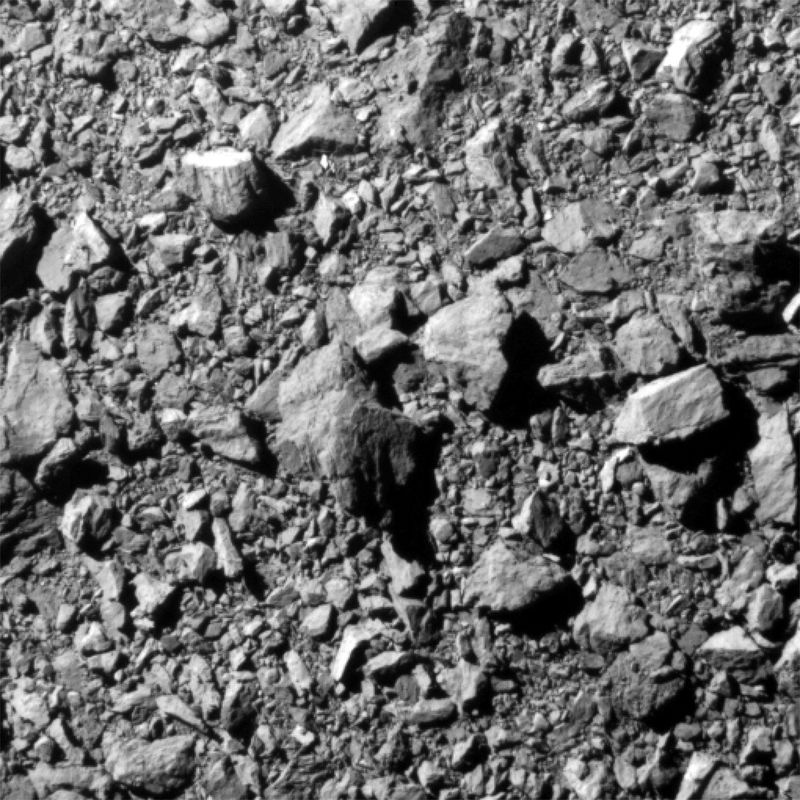By Will Dunham
WASHINGTON (Reuters) - When NASA sent its DART spacecraft to slam into the asteroid Dimorphos in 2022, the U.S. space agency demonstrated that it was possible to change a celestial object's trajectory, if needed, to protect Earth. It turns out that this collision changed not only the asteroid's path but its shape as well.
The asteroid, which before the DART encounter looked like a ball that was a bit plump in the waist, now appears to be shaped more like a watermelon - or, technically, a triaxial ellipsoid, scientists said on Tuesday.
"The prevailing understanding is that Dimorphos is a loosely packed agglomeration of debris ranging from dust to gravel to boulders. Thus, its global strength is quite low, allowing deformation much more easily than for a solid monolithic body," said Steve Chesley, a senior research scientist at NASA's Jet Propulsion Laboratory (JPL) in California and a co-author of the study published in the Planetary Science Journal.
"The shape change was so dramatic because of its rubble-pile composition," said JPL navigation engineer and study lead author Shantanu Naidu. "By measuring the pre- and post-impact orbit of Dimorphos, we were able to deduce the change in the shape of Dimorphos due to the DART impact."
Dimorphos is a moonlet of Didymos, which is defined as a near-Earth asteroid. The DART (Double Asteroid Redirection Test) mission was a proof-of-principle mission using a spacecraft to apply kinetic force to nudge a celestial object that otherwise might be on a collision course with Earth. Dimorphos and Didymos do not pose an actual threat to Earth.
The spacecraft collided on Sept. 26, 2022, at about 14,000 miles per hour (22,530 kph) into Dimorphos, an asteroid that was about 560 feet (170 meters) wide, roughly 6.8 million miles (11 million km) from Earth. Didymos has a diameter of about a half mile (780 meters).
DART's collision, which sent rocky debris from the asteroid flying into space, also changed the orbital path that Dimorphos takes around Didymos - making it elliptical instead of circular - and its orbital period, the time it takes to complete a single orbit, the scientists said. It now takes Dimorphos 11 hours, 22 minutes and 3 seconds to complete an orbit, 33 minutes and 15 seconds less than before the impact, they found.
Scientists had previously disclosed that the asteroid's orbit had changed, with the new study offering the most precise readings yet on that.
Chesley said the asteroid's orbital period continued to decay slowly in the weeks after the impact.
"We believe that this is due to the fact that loose debris in the system continues to leak out and carries angular momentum with it, thus necessarily contracting the orbit," Chesley added. Angular momentum refers to how much a rotating object's mass is distributed around its axis and how quickly it is spinning.
Dimorphos' average orbital distance from Didymos is now about 3,780 feet (1,152 meters), roughly 120 feet (37 meters) less than before the impact, the study found.
The researchers based their conclusions on the shape and orbit of Dimorphos on observations from ground-based telescopes of how sunlight reflecting off the surfaces of the two asteroids changed over time, data from radio waves bouncing off the asteroids and images DART obtained during its rendezvous.

More information is expected in the near future about the two asteroids. The European Space Agency's Hera spacecraft is due to launch in October and reach them in late 2026 to check things out.
"We are anxiously awaiting the arrival of ESA's Hera spacecraft, when we will be able to compare our modeled shape with that obtained from Hera imagery. We will also learn how much the orbit has changed since we last observed it in 2023," Chesley said.